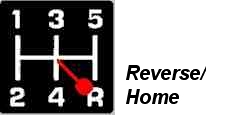
by Bob Mann (2/15/2002)
Respected business writers are missing the boat,
“big time”, to quote
the current Vice President's favorite retort.
Recent New York Times (Roger Lowenstein) and Wall
Street Journal
(Scott McCartney) articles tee up airline labor
as the “bad guys”
in the industry’s present morasse.
Both articles completely ignore the business model
issue.
Management chooses the business model, a choice
that greatly
influences possibilities and outcomes.
Southwest is rightly held out as a model of productivity
(a point made in
spades at an infamous Wings Club presentation
in 1993). Highest
ASM/employee, lowest output costs, among the
best compensated (by class and
craft). Doesn't hurt that it's traditionally
judged one of the best places
in the nation to work, either. And customers
love them -- they don't
over-promise, and they generally over-deliver.
I think these superlatives
are interrelated, and self-reinforcing.
Sadly, when management chooses the network airline
model, it immediately
incurs a substantial, structural productivity
penalty associated with the
hub-and-spoke system. It converts parity
(often, lower) input costs to
deficient output costs. It disenfranchises
employees, who generally hate to
wait around, would truly prefer to be productive,
and can see the errors
compound, every day they work. Customers
don't like it, in many cases,
either. Investors? Southwest's market
cap exceeds all other airlines'
combined. (See above.)
"Let management manage", is how employees (and
their consultants) are
admonished when they attempt to be constructively
critical. Fair enough.
I will simply point out that they have had their
chances, over the longest and
most robust business cycle in recent history.
Absent a fresh approach, why
should labor further subsidize such obvious,
well-documented and continuing
poor choices?
Rational objections to the Times and Journal are two-fold:
1./ management's unwillingness to evolve
to long-term market change,
and
2./ Lowenstein/McCartney et al tagging
employees with the due bill.
Breathless accolades for network airlines aside,
the market, however it is
defined (investors, customers, etc.), is simply
not demanding an industry
composed of hub-and-spoke clones, certainly not
as many as exist today,
here or elsewhere in the aviation world.
If anything, the pendulum is
swinging the other way (for a while, perhaps
for the long-term).
With apologies to James Carville, “It’s the
business model, stupid!”
AND ... For the ten-year retrospective, how about this Letter to the Editor?
Letters to the Editor
The Wall Street Journal
Published April 27, 1994
Hubs Started Airlines' Nosedive
Frank Dooley, in his March 30, 1994 editorial-page article "Why Airlines Crash", perpetuates one of tile industry's great myths when he blames arcane work rules and restrictive contracts for making certain airlines uncompetitive. He misidentifies the productivity (and profitability) problem's causality.
Airlines' profit problem is structural, and worsening due to management denial. The decade-old evolution toward the pure hub operating structure is the most significant driver of cost inefficiency and low productivity. It is disingenuous to blame an industry's woes on its workers, when the appropriate demand is that management "fix the factory". Similar to steel, auto and other capital and labor intensive businesses faced by lower-cost competition, the airline industry must re-engineer its structure and processes to maximize productivity, delivering lower prices and the value-for-money a changed marketplace demands.
The results of such an original initiative are illustrated using Mr. Dooley's choice of Southwest Airlines. Southwest's input costs are parity with the Big Three airlines, yet it is on average more than 30% more productive in terms of output offered for sale. This is a function of asset allocation strategy - primarily its aircraft scheduling, secondarily, by asset allocations that are byproducts of its scheduling strategy, and not at all by wage rates and work rules, which are in many ways similar to Big Three operators'. The core of Southwest's competitive advantage is its strategy of maximizing asset use structurally, from which it derives high productivity and the ability to offer low fares and greater value.
In 1991, then U.S. Secretary of Transportation Samuel Skinner commissioned a study, by Penn State University's Dr. Peter Capelli, of airline labor issues and their impact on industry fortunes. That study found labor issues had not negatively affected industry fortunes. The study did, however, raise the issue of deteriorating industry productivity at Big Three airlines, which was obvious as long ago as 1988 and which is inherent to and a direct result of over-use of the hub scheduling strategy.
Mr. Dooley's labor contract causality argument evaporates if one looks beneath the surface, reviewing in detail Southwest's aircraft and crew scheduling, how these affect day-to-day working conditions and productivity. The point-to-point scheduling favored by Southwest results in higher employee productivity than hub airlines produce, despite shorter duty days, and fewer days away from home per month, and in addition, avoids self-imposed hub-related congestion and delays. (Southwest is the industry's on-time leader.) These working conditions compare favorably with the greater number of longer duty days, punctuated by endless sitting-around, induced delays and remote layovers experienced by crews flying hub schedules.
Southwest's comparatively favorable working conditions yield more actual flying time, less time on the job, and industry-parity pay. Southwest's schedules may be flown using wage rates and work rules in Big Three carrier contracts yielding attractive financial results. Yet hub carriers' schedules may not be flown with Southwest's "ideal" contract, without substantial unfavorable effects. This is purely a function of hub scheduling. Looking beyond the work-rule rhetoric to the root cause, it is hub-bound aircraft, crews and facilities that are the binding constraints on productivity.
Robert W. Mann, Jr.
President
R.W. Mann & Company, Inc.
Airline Industry Analysis and Consulting
Brooklyn Heights, N.Y.